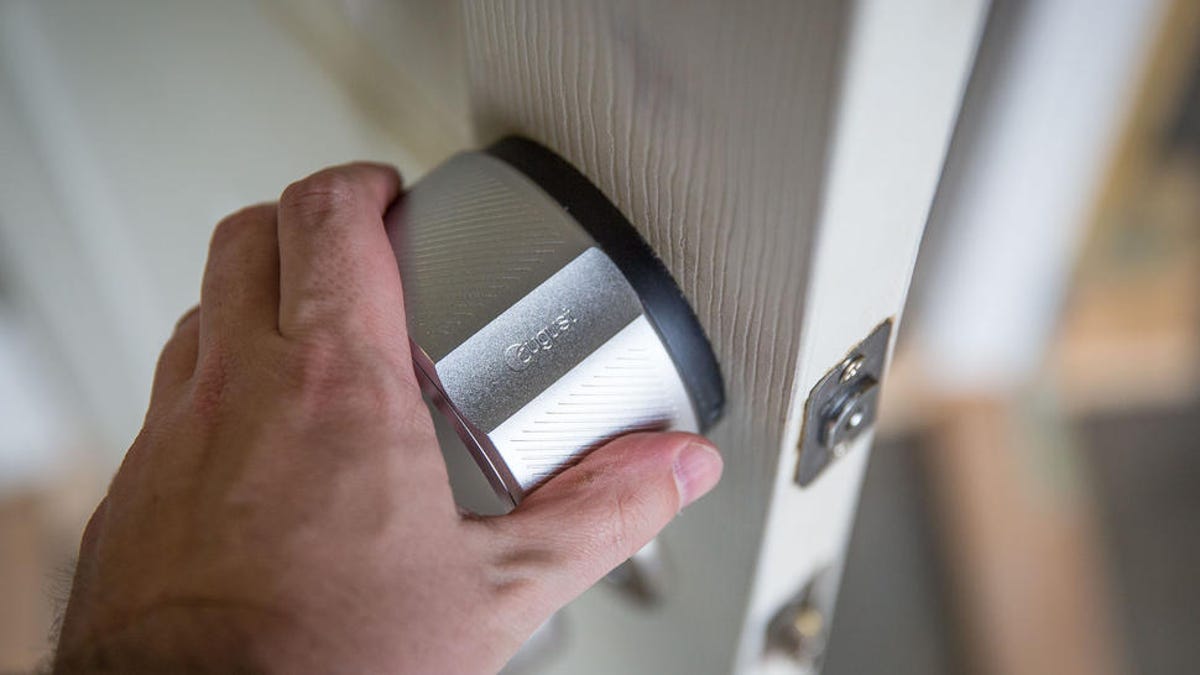 Why You Can Trust CNET
Why You Can Trust CNET These key features set smart locks apart (pictures)
Curious about smart locks, but don't know where to start? This handy slideshow will give you the lowdown.

Where smart locks stand out
Smart locks represent a small, but growing subset of the broader home security market.
Generally, every model is supposed to add convenience to your daily life so you can lock and unlock your door remotely. But not every smart lock works the same.
Read on to find out about the tech that makes each smart lock tick.
August Smart Lock with HomeKit
The $229/£160/AU$125 second-generation August Smart Lock has Bluetooth tech for automated control when you're roughly 30 feet or closer to your lock.
But this model can also work with the $79/£55/AU$101 Wi-Fi August Connect accessory for remote control anywhere you have an Internet connection.
It's also compatible with HomeKit, although the integration hasn't been "turned on" just yet. Still, connection with Apple's Siri-based automation platform is forthcoming.
Kwikset Kevo
Kwikset's $219/£150/AU$280 Bluetooth-enabled Kevo lock comes with its own SmartKey deadbolt. That means you'll have to remove all of your current lock hardware to make space for the Kevo on your door.
It also features a literal "tap to unlock" option that doesn't exactly make unlocking your front door hands-free, but it does simplify things a bit.
Poly-Control Danalock
Poly-Control's $179/£125/AU$229 Danalock fits over most existing deadbolts to add Bluetooth and Z-Wave connectivity to your current lock mechanism.
While this less expensive option seemed to have potential at first glance, it wasn't that easy to use. In particular, its "knock to unlock" feature, which is supposed to let you knock gently on your phone to unlock your front door didn't work at all during our testing.
Schlage Sense Bluetooth Deadbolt
Like August's Smart Lock 2.0, the $229/£160/AU$125 Schlage Sense Bluetooth Deadbolt is HomeKit-enabled. That means you can ask Siri to control your lock remotely.
This version also has its own deadbolt, so you'll have to do a little more install work to get it up and running.
Schlage Camelot Touchscreen Deadbolt
Like the Schlage Sense Bluetooth Deadbolt, the $199/£138/AU$255 Schlage Camelot Touchscreen Deadbolt comes with a keypad so you can enter a secret code to unlock your front door.
This model's smarts are powered by Z-Wave, so you'll need to invest in a separate hub, like Wink or SmartThings, to maximize its connected capabilities.
Yale Linus Lock
Yale hasn't released its new Linus Lock just yet (it's scheduled to be released some time in 2016), but this model has a couple of unique smart features.
For starters, there's no keyed entry -- just a keypad for manually locking and unlocking the door in person. The Linus Lock is also supposed to be the first third-party product outfitted with Google/Alphabet's Weave protocol, a communications layer designed to help different smart-home products talk to one another.
Yale Real Living Touchscreen Z-Wave Deadbolt
The $275/£190/AU$352 Yale Real Living Touchscreen Z-Wave Deadbolt is similar to the Schlage Camelot Touchscreen Deadbolt.
It comes with its own deadbolt, a keypad and Z-Wave tech that requires a separate hub to operate.

